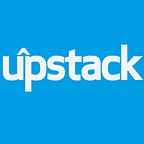Reinvent Your Talent Pipelining: Ways To Attract The Top Talent Of Your Dreams
Imagine having a warm candidate pool at your disposal for your next difficult-to-fill position. Those who manage talent pipelines are living the dream and taking longer lunch breaks than you. Pipelining not only saves you and your team the time and effort of reinventing the wheel for each role but also minimizes the time it takes to hire and results in higher-quality candidates.
When a position becomes available, a talent pipeline is a collection of individuals that may be contacted and employed. This is the pinnacle of relationship-based recruiting. Rather than looking for a candidate when a position is open, this technique emphasizes cultivating long-term relationships with passive candidates in the hopes of future chances.
Creating a talent pipeline may be a time-consuming and labor-intensive operation. Employers should focus on pipelining talent only if it is relevant to their needs, as with any sophisticated business activity.
So, how can you effectively manage talent pipelines?
Understand Your Recruitment Needs
You’ll need to construct a candidate persona to figure out who your target is. A candidate persona is a made-up version of the person you’re looking for. The attributes, abilities, and personality traits you’re seeking are defined in candidate personas.
Creating this character aids recruiters in quickly identifying the best-suited prospect. The building of personas is an important aspect of the recruitment strategy.
Nurture Internal Talent
Simply put, a talent pipeline is a pool of candidates who are willing, willing, and capable of filling important, relevant roles when they become vacant. The types of positions that open up often require candidates with certain skills.
Getting into the talent pipeline early is not only crucial to getting a job but also a great strategy if you have a particular company in mind and are prepared to wait for the perfect opportunity. Hiring from within your organization enhances your company’s general culture and working environment.
Proactively Seek Out Diverse Talent Pipeline
If your goal is to hire more workers from marginalized communities or to bring more diverse candidates to the table, a talent pipeline is one of the best options available. A talent pipeline enables you and your team to cultivate relationships with candidates without putting pressure on them to fill specific positions.
Once you have built a pipeline and established relationships with talent over time, suitable candidates who are qualified and interested in joining your company are referred to as passive talent.
Launch An Employee Referral Program
Talent pipelines allow you to establish connections and trusting relationships with the individuals you need for your company. If you ask a coworker to email you, your CV or connect you with a human resources manager, recommendations are a big source of talent in the pipeline, and recommendations improve recruiting. The area where proactive recruitment can help is pipeline activities.
Dedicated Career Pages on Social Media
The majority of businesses already have a social media presence, which you may use to funnel leads. While persuading your marketers and social media managers to use it appropriately may be difficult, long-term investment in that channel pays off.
Make your page more recruitment-oriented. When it comes to job pages on social networking platforms, Dell, Facebook, and Verizon are all doing just that.
Balancing Between Internal and External Hires
Those who want to promote their employees will not be able to rely solely on existing employees. The importance of solving this problem lies not only with you, the recruiter, or the HR manager but with the entire team.
This is why Tim Hailey, Head of Human Resources at Mattersights, stresses the importance of striking the right balance between internal and external talent within your company. Once your business begins to grow, McManigal says, you can use external hiring to fill the gaps unless internal candidates are offered. This does not mean that you should wait for your business to reach a certain stage of growth before it starts hiring.
Engage With Potential Candidates
It’s not easy to build a pipeline of candidates, especially for positions that aren’t open. To build those touchpoints, it’s vital to put in the effort upfront. Request a coffee or lunch meeting, invite them to professional events, or simply make quick phone contact.
Determine the best method for you and your possible candidates. Last but not least, show genuine interest in each of these connections while also being considerate of their time.
Measure, Evaluate, and Refine
Even if your planning is flawless, it is unlikely that you would be able to get everything perfect. As a result, you’ll need a method to track your progress, identify areas for growth, and make changes. Remember that success isn’t about making a change; it’s about getting the results you want.
To determine how to measure success, use the advantages you stated in your business case. Make a point of quantifying outcomes to eliminate subjectivity, but don’t forget to account for qualitative data as well. Then, when you run across a problem during the talent identification, attraction, or engagement stages, take steps to improve and fix your process.
Conclusion
You can use pipeline talent to lay a solid foundation for your talent and experience strategy. If the talent pool is properly constructed, it can be an excellent source of qualified candidates. Attracting ATS candidates is the simplest and most cost-effective way to find talent.
Once you have assembled a network of suitable candidates both qualified and interested in joining your company, you have created a talent pipeline. You can call these candidates whenever a role opens up or you want to expand.
Upstack — matches startups with vetted software developers! Ready for a match made in Heaven? Get in touch!
Originally published at Upstack.co on Jan 12, 2022, by Sheetal Munjal.
